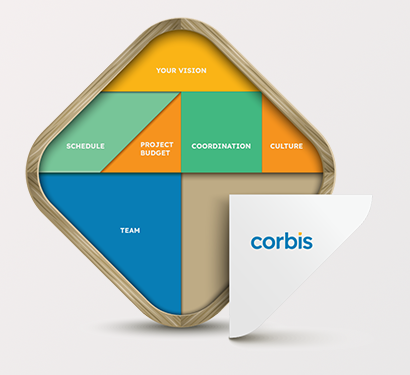Collaboration is the driving force behind every successful project. However, coordinating teams with different priorities, tools, and ways of working can be challenging. In this article, we share lessons learned across projects of various scales; what works, what creates friction, and how we actively address challenges to keep projects moving forward smoothly.
At Corbis, we have developed strategies, workflows, and templates that align all stakeholders involved while maintaining flexibility and creativity. This approach combines experience, processes, and technology. Let's begin by discussing what actually works versus what doesn't, and conclude with the crucial role that architects play in fostering collaboration.
What works
# Start with clarity: define responsibilities and workflows at the beginning, and establish clear communication channels.
# Centralize information: use shared cloud platforms to avoid misalignment. For example, Autodesk Construction Cloud (ACC), so everyone works from the same version.
# Have a dedicated coordinator: assign someone to manage updates, organize workshops, and keep alignment. This neutral leader ensures that different voices are heard and decisions remain focused.
# Standardize communication: allowing consultants to work with the tools they are most comfortable with daily, but requiring that updates are shared in a standard format (for example, PDFs at the same scale).
# Setting deadlines for sharing the latest updates to avoid duplication and confusion.
# Communicate early and often: raise issues as soon as they appear to avoid last-minute rework.
# Keep it simple: processes should support the design, not slow it down.
On a residential project in Sunnyvale, California, all consultants utilized Revit, which significantly enhanced cross-discipline coordination. Additionally, a specialized company was engaged to gather this information and facilitate live Navisworks workshops. Everyone had a chance to agree or disagree in the session, and if someone wasn't present, they accepted the decision made on their behalf. This process fosters commitment, responsibility, and ownership across the team—and reinforces the architect's role as an integrator. At Corbis, our specialists have extensive experience in assuming a dedicated coordination role, effectively leading collaboration and ensuring that complex projects run smoothly.

What doesn't work
- Working in isolation.
- Overcomplicating processes with unnecessary bureaucracy.
- Ignoring minor conflicts until they escalate into bigger issues.
- Delayed or last-minute sharing of drawings and updates.
For example, in another project in Abu Dhabi, the client team had included a PM company responsible for collecting consultant information. Still, the information was presented in different formats and scales, making it challenging to integrate updates. Therefore, multiple coordination meetings were required to clarify points, and comments only arrived two weeks before the final delivery, compromising design and deliverables. Ultimately, success was possible only thanks to strong technical leadership and skilled production team members who implemented changes carefully.
Architects as integrators
The future points toward more integrated approaches: digital collaboration tools, agile-inspired project management, and roles dedicated entirely to stakeholder alignment. The challenge is to embrace these methods without losing creativity or flexibility.
Architects are not only designers but also integrators. Our role is shifting — and that is exciting! By taking responsibility for connecting disciplines, facilitating communication, and aligning stakeholders, we ensure that complex projects run smoothly while preserving the design vision.
Every time I look back at a finished project, what I remember most is not the drawings or the deadlines, but the moments where the team came together to solve something difficult. That's what collaboration really means, and what being an architect as an integrator is all about.
Collaboration isn't just about exchanging files, but building trust, sharing accountability, and moving together toward a common goal. By standardizing workflows, working in the cloud, and empowering our coordinators, we ensure that our teams stay connected and focused on what matters most: delivering exceptional design.
As architects and integrators, we take pride in connecting disciplines, facilitating effective communication, and aligning stakeholders to guarantee projects run smoothly without compromising the design vision. Every project we complete is a reminder that collaboration — done right — is what truly makes a project successful.